Leaf Spring Suspension
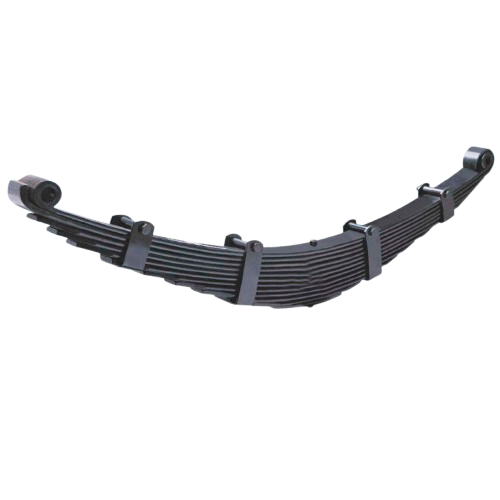
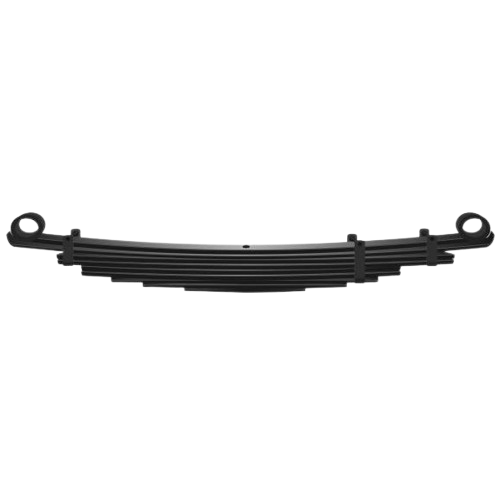
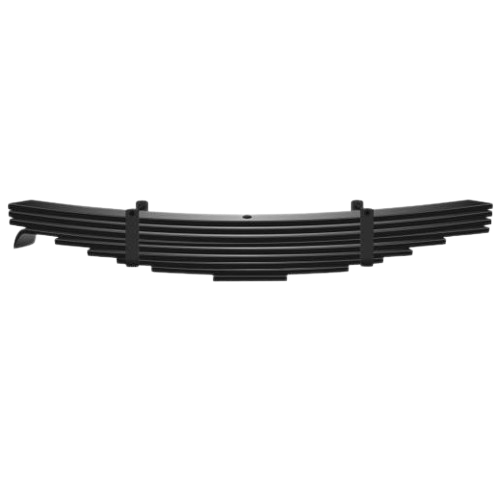

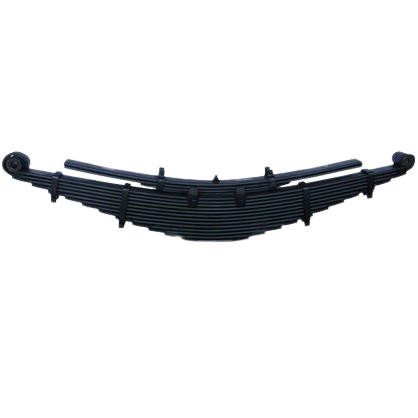
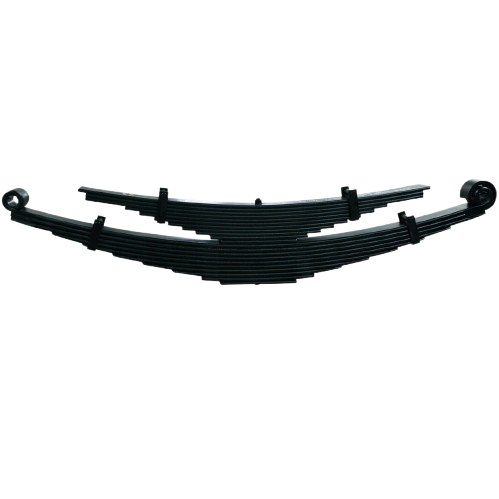
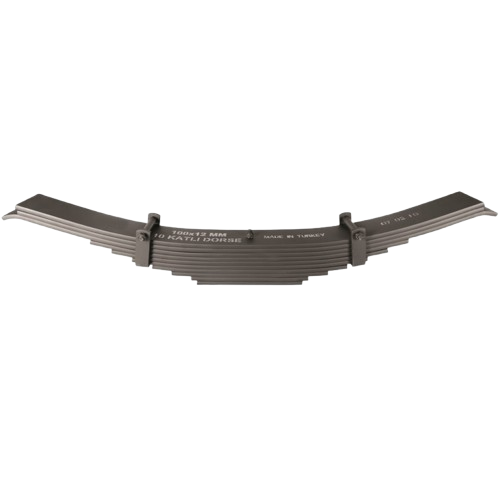
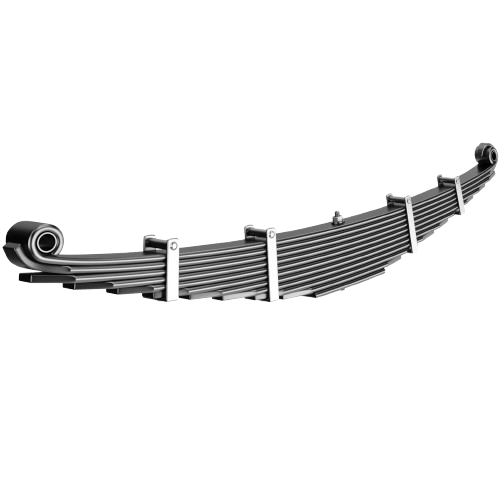
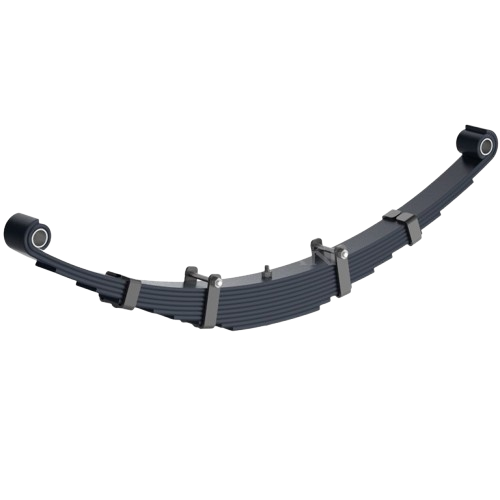
What is a Leaf Spring suspension ?
A Leaf Spring suspension is a type of Spring made from a single or a few tapered, parabolic-shaped steel strips, used in vehicles to support weight and absorb shocks. Unlike traditional multi-Leaf Springs, which use multiple layers of flat steel, a Leaf Spring suspension gradually tapers in thickness and width from the center to the ends, creating a curved, parabolic shape. This design allows for smoother ride quality, reduced friction between layers and better overall performance with fewer leaves. It is commonly used in heavy-duty vehicles like trucks and off-road vehicles.
● Leaf Spring suspension function :
A Leaf Spring suspension functions by using the unique design of a Parabolic Leaf Spring to absorb shocks, support the vehicle’s weight, and provide a smooth ride. Here’s how it works :
1. Absorbing road impacts :
When a vehicle travels over bumps or rough terrain, the wheels move up and down. The Leaf Spring suspension absorbs these vertical forces by flexing. As the wheel encounters a bump, the Spring compresses and when the wheel goes back down, the Spring expands back to its original shape. This helps to reduce the jarring impact that would otherwise be felt by the vehicle and its occupants.
2. Progressive suspension :
The parabolic shape of the Leaf Spring suspension means that it becomes stiffer as it compresses. The Spring is softer at the start of compression and gradually gets stiffer as it continues to compress. This progressive action improves ride quality by offering better cushioning at low forces (such as small bumps) and providing more support at higher forces (such as larger bumps or heavier loads).
3. Weight distribution :
The Leaf Spring suspension helps to evenly distribute the weight of the vehicle over the suspension system, ensuring that the weight is balanced across the axles. This helps maintain vehicle stability, especially when carrying heavy loads.
4. Reduced friction :
Since Leaf Spring suspension typically have fewer layers compared to traditional multi-Leaf Springs, there is less friction between the leaves. The parabolic design reduces friction between the Spring leaves during compression and rebound, which reduces wear and tear on the suspension and increases its lifespan.
5. Supporting load :
Leaf Spring suspension is designed to handle heavy loads, which is why they are commonly used in trucks, buses and off-road vehicles. The Spring can flex to accommodate the weight of the vehicle and its cargo, while also ensuring that the ride remains as smooth as possible under load.
6. Flexibility and comfort :
The Leaf Spring suspension tapered design provides more flexibility than traditional Leaf Springs. This flexibility allows the suspension to respond better to changes in road conditions, offering more comfort by absorbing shocks and vibrations more effectively.
7. Less weight :
The reduction in the number of leaves (compared to multi-Leaf Springs) also means a lighter suspension system, which helps improve the overall efficiency and handling of the vehicle. Lighter suspension components can improve fuel efficiency and reduce the strain on the vehicle’s overall structure.
● Types of Leaf Spring suspension :
Leaf Spring suspension come in various types, each designed to meet specific needs in suspension systems. Here are the main types of Leaf Spring :
1. Single-Leaf Spring :
(A) Description : As the name suggests, a single-Leaf Spring consists of only one flat, steel strip.
(B) Use : Typically used in light-duty vehicles or trailers where less load capacity is required.
(C) Advantages : Simpler design, lighter weight, and easier to maintain.
(D) Disadvantages : Limited load capacity and less durability compared to multi-Leaf Springs.
2. Multi-Leaf Spring :
(A) Description : This is the traditional Leaf Spring configuration, made up of several layers (leaves) of steel stacked on top of each other. The leaves can be progressively smaller in length and thickness.
(B) Use : Common in vehicles that require higher load capacity, such as trucks, buses, and some passenger cars.
(C) Advantages : Offers better load-bearing capacity, durability, and stability.
(D) Disadvantages : Heavier than single-Leaf Springs and can produce more friction between the leaves, leading to wear over time.
3. Parabolic Leaf Spring :
(A) Description : A type of multi-Leaf Spring that is designed with fewer, more progressively tapered (parabolic) layers. It has a curved shape, with the leaf thickness decreasing toward the ends.
(B) Use : Found in heavy-duty vehicles like trucks, off-road vehicles, and buses, offering improved performance and a smoother ride.
(C) Advantages : Smoother ride, less friction between layers, reduced weight, and better load-bearing capacity with fewer leaves.
(D) Disadvantages : More expensive and complex to manufacture compared to traditional multi-Leaf Springs.
4. Elliptical Leaf Spring :
(A) Description : This Spring has an elliptical shape, which helps distribute loads more evenly across the Spring. The Leaf Spring is a single piece that forms an elliptical curve.
(B) Use : Used in some older vehicles and light-duty applications.
(C) Advantages : Provides smooth suspension action and even load distribution.
(D) Disadvantages : Less common today due to the rise of other suspension technologies.
5. Variable Rate (Progressive) Leaf Spring :
(A) Description : These Leaf Springs have a progressive design, where the Spring rate increases as the load on the Spring increases. This is achieved by having leaves of different thicknesses or lengths.
(B) Use : Common in vehicles that need to handle varying loads, such as trucks, trailers, and off-road vehicles.
(C) Advantages : Provides a balance of comfort and load-carrying capacity, adjusting to the weight on the vehicle.
(D) Disadvantages : Slightly more complex than standard multi-Leaf Springs, but still widely used due to the benefits.
6. Composite Leaf Spring :
(A) Description : Made from composite materials like fiberglass or carbon fiber, instead of steel, to reduce weight while maintaining strength.
(B) Use : Common in modern vehicles to reduce overall weight and improve fuel efficiency.
(C) Advantages : Lighter weight, corrosion-resistant, and flexible, offering similar load-bearing capacity as steel.
(D) Disadvantages : More expensive to manufacture and repair compared to traditional steel Springs.
7. Reverse Eye Leaf Spring :
(A) Description : In this type, the ends of the Spring are turned in the opposite direction (reverse eye), creating an additional arch or curve.
(B) Use : Often found in suspension systems that require additional strength or a higher Spring rate, such as in certain off-road vehicles and heavy-duty trucks.
(C) Advantages : Offers increased load capacity and a higher Spring rate.
(D) Disadvantages : Typically stiffer than standard Leaf Springs and may provide a rougher ride if not designed properly.
Leaf Spring suspension manufacturers :
● We are Leaf Spring suspension manufacturers upto the following capacity :
1. Flat Thickness – Upto 20 mm.
2. Flat Width – Upto 250 mm.
3. Total Length – As per Drawing or Specification.
4. Total Height – As per Drawing or Specification.
● Raw material grades used :
1. BS:970 EN-45
2. BS:970 EN-47
3. 50Cr.V4
4. 50Cr.4V2
5. 51Cr.V4
6. 50Cr.MoV4
7. 50Si7
8. 55Si7
9. 60Si7
10. SUP-9
11. SUP-9A
12. SAE-5160
etc. and others similar Foreign Grades JIS, ASTM etc.
● Leaf Spring suspension manufacturing process :
1. Material selection and preparation :
(A) Material : The most commonly used material for Leaf Springs is high-carbon steel or alloy steel (like chrome vanadium or chrome-molybdenum) because of its strength, flexibility, and resistance to fatigue. For composite Leaf Springs, materials such as fiberglass or carbon fiber may also be used.
(B) Steel bars : Steel bars or strips are sourced in appropriate sizes and thicknesses. For traditional steel Leaf Springs, the material is typically cold-rolled or hot-rolled steel.
2. Cutting and shaping :
(A) Cutting to length : The steel strips or bars are cut into the desired length, depending on the specific design and dimensions of the Leaf Spring.
(B) Blanking : The steel strips are cut into blanks (rectangular pieces) based on the dimensions needed for each Leaf Spring.
3. Heat treatment :
(A) Hardening : The steel blanks are heated in a furnace to a high temperature (around 800–900°C) and then rapidly cooled (quenched) in water or oil. This process makes the steel hard and increases its tensile strength.
(B) Tempering : After hardening, the steel is tempered at a lower temperature to relieve internal stresses and improve the ductility (flexibility). This helps prevent the Spring from becoming too brittle.
(C) Annealing : In some cases, the steel may undergo an annealing process to make it softer, allowing it to bend and form more easily during subsequent shaping.
4. Forming and shaping :
(A) Bending : The Leaf Springs are then shaped to the required curve using a bending machine or hydraulic press. The steel is carefully formed into the desired arc or shape. This is done progressively, with the steel being bent multiple times to ensure the right curvature.
(B) Tapering (for Parabolic Leaf Springs) : For parabolic Leaf Springs, the thickness of the leaf tapers from the center toward the ends. Special tools are used to gradually reduce the thickness of the steel in the desired pattern.
(C) Eye formation : If the Leaf Spring design requires eyes (the looped ends of the Spring), these are created using a punching die or press. This involves bending the ends of the leaf into a circular shape for attachment to the suspension components.
5. Grinding and polishing :
(A) Grinding : After shaping, the edges of the Leaf Spring are often ground to ensure smoothness and eliminate any sharp edges. This helps in reducing friction between the layers (in multi-Leaf Springs) and prevents premature wear.
(B) Polishing : In some cases, the surface of the Leaf Spring is polished to improve its appearance and reduce surface roughness, which also helps reduce the risk of corrosion.
6. Testing and inspection :
(A) Visual inspection : The Leaf Springs undergo visual inspection to check for any defects or imperfections, such as cracks, bends, or distortions.
(B) Quality control : Various tests are performed to ensure that the Springs meet the required specifications, including – Load testing & Fatigue testing.
7. Assembly (For Multi-Leaf Springs) :
(A) Stacking the Leaves : For multi-Leaf Springs, individual leaves are stacked on top of one another in the correct order, with the shortest leaf at the top and the longest at the bottom.
(B) Binding : The leaves are then bound together using a center bolt or clamp, securing them in place. This bolt goes through the center of the leaves and holds them tightly together.
(C) Tapering (for Progressive Springs) : If the Leaf Spring is designed to be progressive, the leaves are arranged to allow for gradual Spring action when compressed.
8. Final Heat Treatment :
(A) Final Hardening : After the Leaf Spring is fully assembled, some manufacturers may perform an additional hardening or tempering process to ensure the Spring achieves the optimal hardness and flexibility for performance.
9. Coating and finishing :
(A) Surface coating : To protect against rust and corrosion, Leaf Springs are coated with a protective layer, which can include paint, powder coating, or galvanization (zinc coating). This ensures longevity and performance in harsh environments.
(B) Lubrication : In some cases, anti-friction materials or lubricants are applied between the layers of multi-Leaf Springs to reduce friction during operation and prevent wear.
10. Packaging and shipping :
After all the steps are completed and the Springs pass final quality checks, they are packaged and prepared for shipment to customers or assembly plants.
